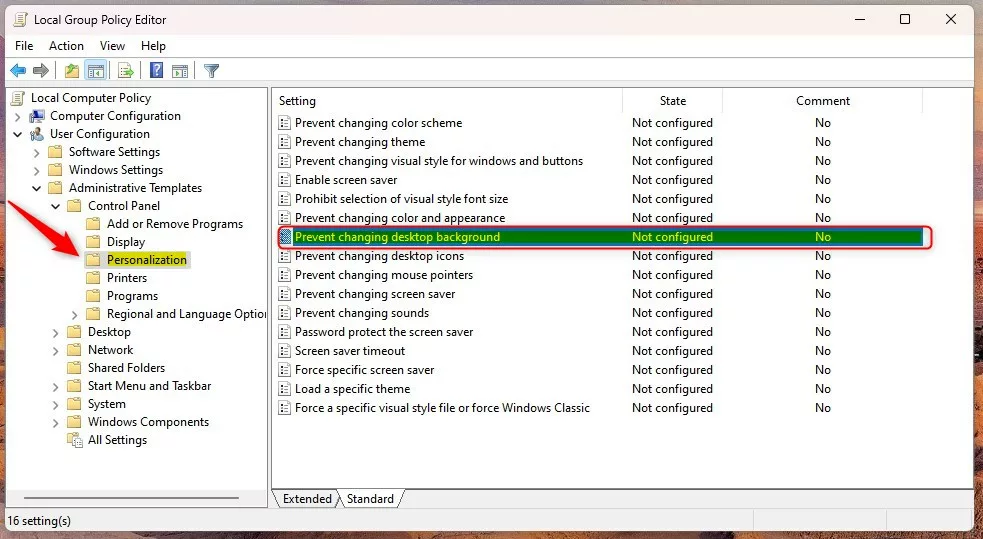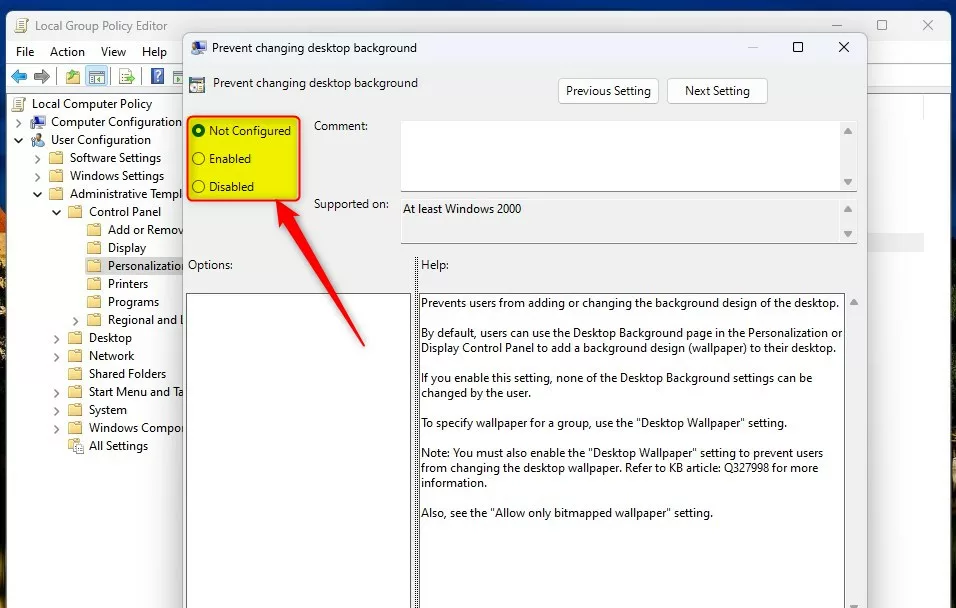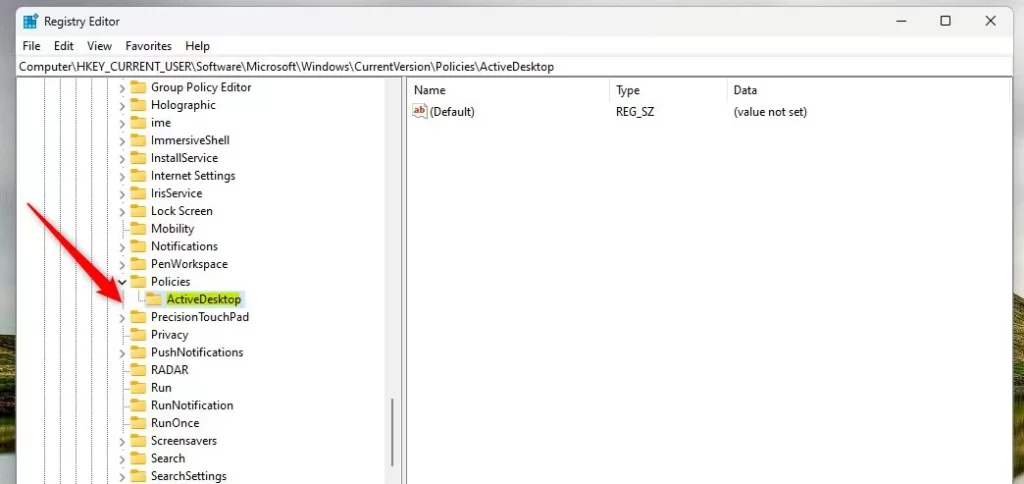This post explains the steps to allow or prevent changing the desktop background in Windows 11.
Windows comes with a standard desktop background. It is a good-looking background for your desktop. Users can use the background settings page in the Settings app or the Control Panel to personalize their desktop by default.
Users can use interesting photos, slideshow, or Spotlight images as background wallpaper.
While users can change the desktop background to suit their needs, administrators can remove the Windows background and replace it with a solid black color.
If you don’t want users changing the desktop background, you can turn on a setting to prevent users from doing so.
As described above, administrators can prevent users from changing their desktop backgrounds. Here’s how to do that.
First, open the Local Group Policy Editor.
Then, navigate and expand the folder trees as described below.
User Configuration > Administrative Templates > Control Panel > Personalization
Within the Personalization panel on the left, double-click to open the “Prevent changing desktop background” settings on the right.

On the “Prevent changing desktop background” window, choose one of the options:
- Not Configure – Same as Enabled – users can change the desktop background.
- Enabled – Users can not change the desktop background.
- Disabled – Users can change the desktop background.

Select and save your settings and exit.
Enable or disable changing the desktop background via the Registry Editor
You can use the Windows Registry Editor if you can not control changing the desktop background settings via the Local Group Policy Editor.
First, open the Windows Registry Editor.
Then navigate the folder keys as described below:
HKEY_CURRENT_USER\Software\Microsoft\Windows\CurrentVersion\Policies\ActiveDesktop
and
HKEY_LOCAL_MACHINE\SOFTWARE\Microsoft\Windows\CurrentVersion\Policies\ActiveDesktop
For both folder keys above, create an ActiveDesktop folder key if one isn’t already created.

Select the ActiveDesktop key on the left, then right-click on the right pane and select New -> DWORD (32-bit) Value. Type a new key named NoChangingWallPaper.
Double-click on the newly created value item (NoChangingWallPaper) to open it. Then, enter the value of 1 to disable or prevent changing the desktop background.
A value of 0 will allow users to change the desktop background.

Repeat the same for the second key above, then click OK and restart your computer for the changes to apply.
That should do it!
Conclusion:
- This guide provides comprehensive steps to enable or disable desktop background changes in Windows 11, offering both Local Group Policy Editor and Registry Editor methods.
- Users can effortlessly restrict or allow desktop background customization based on their preferences by following the instructions.
- The clear visuals and detailed descriptions make it easy for administrators to implement these changes effectively.
- If users encounter issues or have valuable input, they are encouraged to contribute to the discussion using the comment section below the post.

Leave a Reply Cancel reply